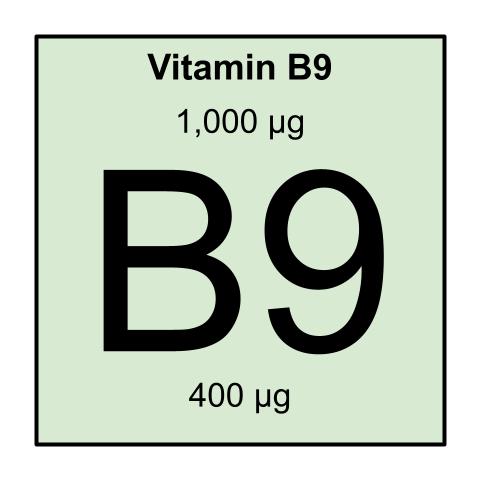B9 lowers homocysteine level which decreases risk of dementias and osteoporosis related bone fractures, is involved in production of neurotransmitters such as dopamine and serotonin, is needed for energy production, is needed for metabolism of amino acids and synthesis of proteins, is important for DNA replication and healthy cell growth and function, is important in red blood cell formation and to prevent anemia, promotes healthy skin and nails, protects the linings in body cavities like the mouth and intestinal tract. Sources include liver, peanuts, sunflower seeds, lentils chickpeas, asparagus, spinach, lettuce, broccoli, and walnuts.
Quick Facts
-Folate is the form in food and our bodies
-Folic acid rarely occurs in nature. It is more stable than folate, and is used in supplements, but the body has to make it into folate
-Required to make DNA, RNA, and synthesize amino acids needed for cell division [54]
-”important for lowering risk of heart attacks and strokes by preventing build-up of homocysteine in the blood; lowers homocysteine level which decreases risk of dementias and osteoporosis related bone fractures; considered a brain food; involved in production of neurotransmitters such as dopamine and serotonin that regulate the brain in areas like appetite, mood, sleep; needed for energy production; needed for metabolism of amino acids and synthesis of proteins; important for DNA replication and healthy cell growth and function; especially critical during stages of rapid cell replication and growth; essential for proper development of the fetus during pregnancy and protects against birth defects; important in red blood cell formation and to prevent anemia; promotes healthy skin and nails; protects the linings in body cavities like the mouth and intestinal tract; supplements may be used to treat ulcers of the leg; preliminary studies suggest that folate may help prevent breast, cervical and pancreatic cancer; may improve symptoms of vitiligo (loss of skin pigment) when used with vitamin B12.” [160]
RDI
Males 19 – 30 yrs: 400 μg
Females 19 – 30 yrs: 400 μg
[128]
Deficiency
-”megaloblastic macrocytic anemia characterized by breathlessness, heart palpitation, insomnia, irritability, forgetfulness, lethargy, stomach disorders, pallor and sensitivity to cold; chronic muscular fatigue or general weakness; affects production of neurotransmitters, leading to symptoms of irritability, hostility, non-senile dementia, confusion, insomnia, mental fatigue, depression, and nervous system problems of the hands and legs; skin disorders like seborrheic dermatitis and vitiligo (loss of pigment leading to white patches on the skin); gastrointestinal tract problems like periodontal disease, gingivitis, mouth and peptic ulcers, and digestive upsets; swollen or sore or smooth red tongue (glossitis); cervical dysplasia, leading to greater risk of cervical cancer from factors such as smoking and HPV infection; premature grey hair; higher blood levels of homocysteine and risk of heart disease; deficiency can slow overall growth rate of infants and children; low birth weight or premature infants, and neural tube defects resulting in severe brain or neurological damage of the fetus.” [160]
Toxicity
-Rare from food sources, the upper limit is recommended to be 1,000 mcg per day because higher doses can hide B12 deficiency symptoms which is dangerous to the nervous system [171].
Sources
Liver, peanuts, sunflower seeds, lentils chickpeas, asparagus, spinach, lettuce, broccoli, walnuts [54], organ meat like animal liver or kidney; legumes (peas and dried beans such as adzuki beans, black beans, cranberry beans, chickpeas or garbanzo beans, dal, kidney beans, lentils, mung beans, navy beans, pinto beans); dark-green leafy vegetables including asparagus, beets, broccoli, collard greens, cauliflower, mustard greens, parsley, romaine lettuce, spinach, turnip greens [160]

